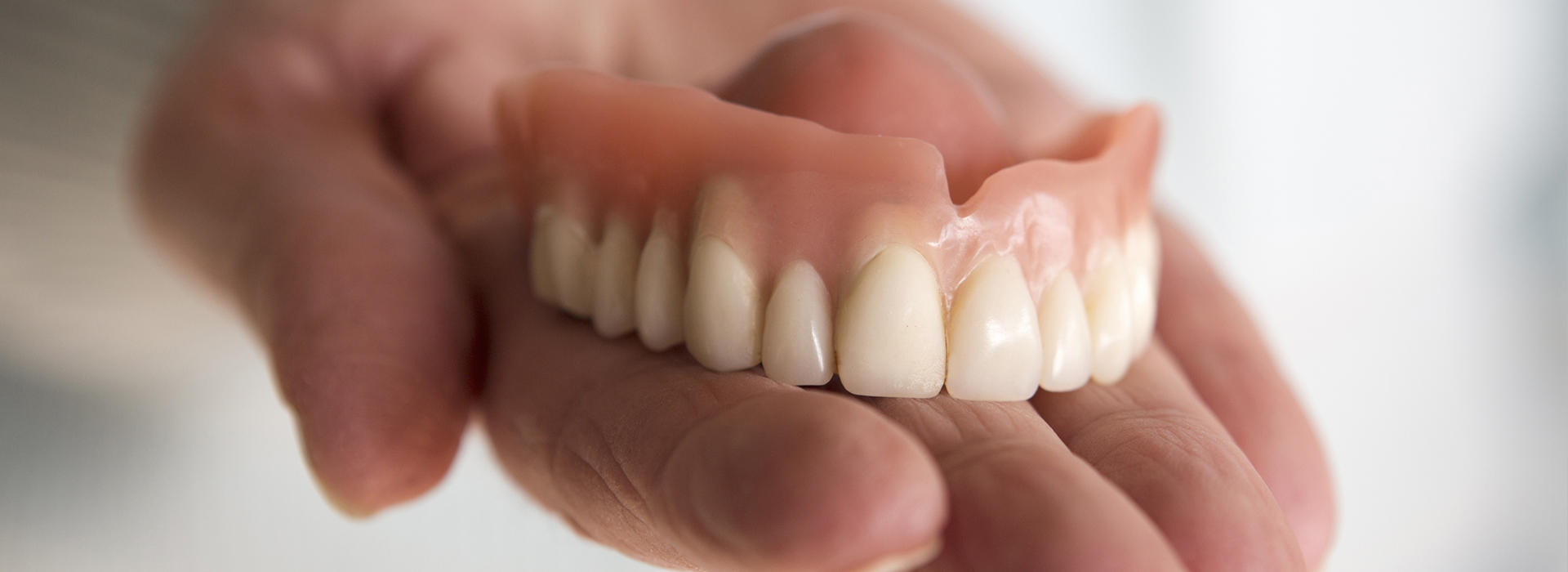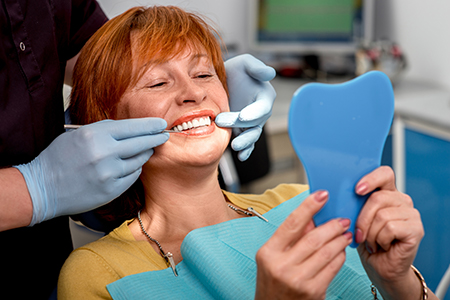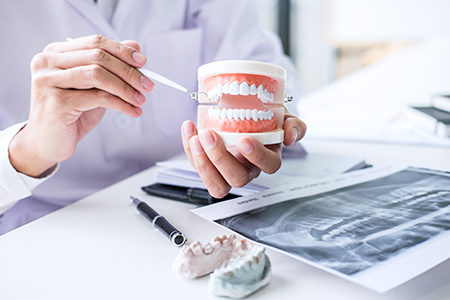Advances in dental materials and laboratory techniques have made replacing missing teeth more natural and reliable than ever. While fixed restorations such as dental implants and bridgework are excellent options for many patients, removable dentures remain a practical and widely used solution for restoring a complete, functional smile.
At the office of Cruzin' Dental, we design dentures with an emphasis on fit, comfort, and an appearance that matches each patient's facial features. Our approach combines careful clinical assessment with precise laboratory work so that the final prosthesis supports speech, chewing, and a confident presence in social situations.
How tooth loss reshapes function, appearance, and everyday life
Losing one or more teeth affects more than the gap you see in the mirror. Changes begin immediately: surrounding teeth can shift, bite patterns alter, and the jawbone — no longer stimulated by tooth roots — begins to remodel. These shifts can make chewing less efficient and create new areas of wear or discomfort.
The effects of missing teeth also extend to the soft tissues and facial contours. Without the vertical support of teeth, the lips and cheeks may collapse inward over time, which can create a sunken look and change the proportions of the lower face. Restoring tooth structure helps preserve oral health and supports a more natural facial profile.
There are also practical, everyday consequences. Gaps can make certain sounds harder to form clearly and lead people to avoid particular foods. Addressing tooth loss with an appropriate prosthetic solution—whether partial or full dentures—helps patients regain function and reduces the long-term risk of complications that arise from untreated tooth loss.
What modern dentures are designed to do
Dentures are removable appliances crafted to rest comfortably on the gums and recreate the appearance and function of natural teeth. They consist of lifelike artificial teeth set in a supportive base that mimics gum tissue. Modern denture acrylics and tooth materials offer improved color, texture, and durability compared with older generations of prosthetics.
Removable dentures provide flexibility: partial dentures can fill several gaps while preserving healthy teeth, and complete dentures can replace all teeth in an arch when necessary. Because they are removable, dentures allow for easier cleaning of both the appliance and the underlying tissues, which supports long-term oral hygiene.
For patients who want greater retention, dentures can be combined with other treatments. Overdentures or implant-supported prostheses use natural teeth or implants as anchors to reduce movement and increase biting efficiency. Your clinical situation and personal goals determine which approach will deliver the best balance of function and comfort.
Selecting the right denture: forms, features, and frequently chosen solutions
Choosing the appropriate denture begins with a careful evaluation of remaining teeth, gum health, and jawbone condition. Our team assesses how well the tissues will support a prosthesis, how the bite comes together, and how the final result should look at rest and in motion. This assessment guides decisions about materials, tooth arrangement, and whether additional procedures are recommended first.
The two broad categories of removable dentures are full (complete) dentures and partial dentures. Full dentures replace all teeth in an upper or lower arch and are customized to fit the contours of healed or healing tissues. Partial dentures replace some missing teeth and rely on remaining healthy teeth and precision attachments for retention.
Full-arch dentures: restoring a complete bite
Full dentures are intended for patients who need replacement of every tooth in an arch. They are carefully contoured to support the lips and cheeks while providing a natural-looking tooth arrangement. The exact design varies by case; considerations include arch shape, bite relationships, and how much soft tissue support is required to achieve a pleasing profile.
Conventional full dentures and immediate alternatives
A conventional full denture is made after teeth have been removed and the tissues have healed, allowing for a precise, stable fit. In contrast, an immediate denture is placed at the time of extractions so the patient does not go without teeth during healing. Immediate dentures are a transitional option and may require relining or adjustment as tissues remodel.
-
Immediate denture
An immediate denture offers an aesthetic and functional replacement right away. As the gums and bone change shape during the healing period, the denture is typically adjusted so it remains comfortable and stable.
-
Overdenture
An overdenture gains extra support by fitting over remaining natural tooth roots or prepared tooth stubs. Those retained structures preserve bone and provide added stability for the prosthesis while still allowing the denture to be removed for cleaning.
-
Implant-supported denture
Implant-supported dentures clip or snap onto dental implants placed in the jaw. This option significantly reduces movement and improves chewing performance while maintaining the removability and cleaning benefits of a denture.
Partial dentures: targeted replacement that preserves the bite
Partial dentures are appropriate when one or more natural teeth remain healthy and can help anchor the appliance. They prevent unwanted drifting of adjacent teeth, help maintain proper chewing efficiency, and restore an even bite. Modern partials can be made from a variety of framework materials that balance strength, flexibility, and appearance.
Design choices for partial dentures include clasp styles, precision attachments, and options for tooth and gum coloration. By stabilizing the existing dentition, partial dentures protect the remaining teeth and facilitate easier maintenance of oral health.
Our practice takes a case-by-case approach when recommending a partial or full denture. We explain the pros and cons of each solution and consider the condition of the teeth and bone so you can choose a plan that aligns with your functional needs and lifestyle.
How we create dentures that fit well and perform reliably
Fabricating a successful denture involves more than selecting a tooth shade and shape. It requires understanding how the jaws meet, how the muscles of the lips and cheeks interact with the prosthesis, and how pressure is distributed across the tissues. Skilled impressions, careful try-ins, and precise laboratory procedures all contribute to a final prosthesis that feels natural and functions effectively.
When needed, diagnostic imaging and a comprehensive oral examination help identify underlying issues that should be addressed before denture fabrication. Preparing the mouth—whether that means treating gum disease, removing failing teeth, or smoothing bony ridges—improves the long-term comfort and stability of the denture.
Throughout the process, communication between the patient, clinician, and dental laboratory is essential. We discuss tooth positioning, smile line, and how the denture should support the face so expectations are aligned and the final result is both functional and esthetically satisfying.
Adjusting to dentures: tips for comfort, care, and longevity
Adapting to a new denture takes time. It is common to experience increased saliva production at first and to need several minor adjustments before the fit feels perfect. Speaking and eating with a new prosthesis improves with practice; reading aloud and starting with soft, well-cut foods can accelerate the learning curve.
Denton care is straightforward but important: rinse and brush the denture daily, soak it in water or a recommended cleaner when not in use, and maintain hygiene of any remaining natural teeth and the surrounding gums. Removing dentures at night gives the tissues a chance to recover and helps preserve tissue health.
Regular follow-up appointments are an integral part of long-term success. At these visits we evaluate fit, make adjustments or relines when tissue changes occur, and perform a comprehensive oral exam to monitor the condition of any remaining teeth and soft tissues.
-
Managing sore spots and adjustments
If you notice irritation, wearing the denture for a short period before an adjustment appointment helps pinpoint pressure areas so we can relieve them precisely.
-
Preventive maintenance
Keeping the denture and oral tissues clean reduces the risk of infections and staining. We will advise on the best cleaning tools and products for your appliance.
-
When additional retention is beneficial
Some patients benefit from enhanced retention methods such as adhesives, attachments, or implant support. We review these options if stability becomes a concern.
Our office is committed to helping patients regain comfortable function and a natural appearance with carefully made dentures. If you have questions about which denture option is right for you or would like more information about the process, please contact us for additional details and to arrange a consultation.







